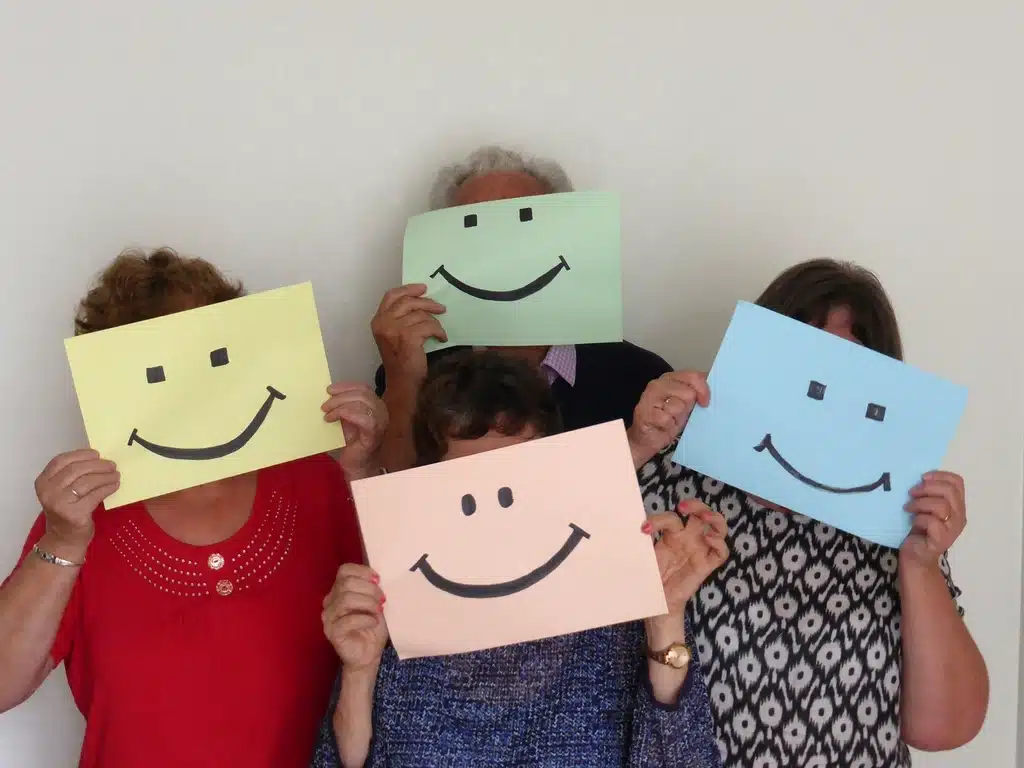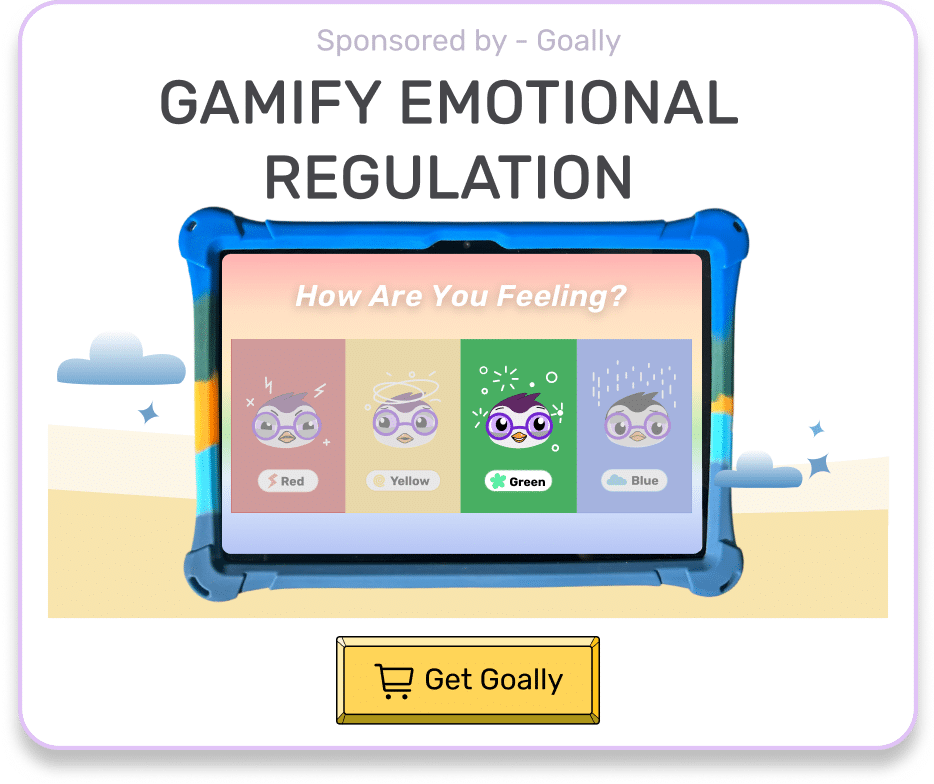Understanding emotions can be tough for kids, especially those with learning differences. A facial expressions chart provides a simple, effective way to help kids recognize and express their feelings confidently.
Key Takeaways:
- Helps kids identify and communicate emotions effectively.
- Especially useful for neurodivergent kids or those with learning differences.
- Improves emotional literacy and self-regulation with consistent use.
- Versatile for home, school, or therapy settings.
- Free printable available to get started right away.
What is a facial expressions chart for kids? A facial expressions chart is a visual tool displaying various emotions through simple illustrations of faces. It aids children, particularly those with learning or thinking differences, in understanding and communicating their feelings effectively.
Table of Contents
Why a Facial Expressions Chart is Essential
Understanding facial expressions is super important for kids’ emotional growth. They often find it hard to explain their feelings, leading to frustration for both them and you. A facial expressions chart can really help here by giving kids a visual guide to refer to when they can’t quite say what they feel. This is especially handy for neurodivergent kids, who might have a tougher time figuring out their emotions.
Kids who regularly use tools like facial expression charts have better emotional regulation and are more likely to develop strong social skills.

Read more: How to Tell if Someone is Angry
How to Use a Facial Expressions Chart
Using a facial expressions chart is straightforward, but it’s important to introduce it in a way that feels natural and engaging for your child. Here’s a step-by-step guide:
- Start by introducing the chart during a calm moment, not when your child is already upset.
- Go through each expression on the chart and label it together—happy, sad, angry, etc.
- Use real-life examples or stories to connect the emotions to situations your child has experienced.
- Encourage your child to point to the face that matches how they’re feeling whenever they’re unsure how to express themselves.
- Over time, prompt them to verbalize the emotion along with pointing to the face.
Consistency is key here. The more you use the chart, the more comfortable your child will become with it. This tool can be especially powerful when combined with other strategies, like journaling or talking through emotions at the end of the day.
Benefits of Using a Facial Expressions Chart
The benefits of using a facial expressions chart extend beyond just helping your child communicate. Here are a few ways it can make a difference:
Improved Emotional Literacy
Emotional literacy is the ability to recognize, understand, and appropriately express emotions. For neurodivergent kids, this can be particularly challenging. A facial expressions chart provides a clear, visual way for kids to learn about different emotions and how to recognize them in themselves and others.
Better Emotional Regulation
When kids can identify how they’re feeling, they’re better equipped to manage those emotions. For instance, if a child can recognize that they’re feeling frustrated, they’re more likely to seek out appropriate coping mechanisms, like taking a break or asking for help.
Enhanced Social Skills
Recognizing emotions in others is a critical social skill. Kids who can read facial expressions are better at forming and maintaining relationships. They’re more empathetic and can respond appropriately to others’ feelings, which is a key part of building strong, healthy relationships.
Implementing the Chart in Different Settings
You can use a facial expressions chart in a variety of settings, not just at home. Here are a few ideas:
In the Classroom
Teachers can use the chart as part of their daily routine, perhaps during morning meetings or as a check-in tool throughout the day. This helps create a classroom environment where emotions are acknowledged and respected.
During Therapy Sessions
Therapists often use tools like these to help kids who struggle with emotional regulation. The chart can serve as a foundation for deeper discussions about emotions and coping strategies.
At Home
At home, the chart can be a part of your daily routine. You might use it during meals to discuss how everyone is feeling or as a bedtime check-in to reflect on the day.
When to Use a Facial Expressions Chart
Knowing when to use a facial expressions chart is just as important as knowing how to use it. Here are some key moments:
- During Emotional Outbursts: If your child is upset but can’t articulate why, the chart can help them pinpoint their feelings.
- As a Preventative Tool: Use the chart to check in with your child’s emotions before they escalate. This can help prevent meltdowns.
- In Daily Routines: Incorporate the chart into daily activities like bedtime or meal times to normalize talking about emotions.

Read more: Autism Facial Expressions | Parents Guide
How a Facial Expressions Chart Supports Neurodivergent Kids
For neurodivergent kids, understanding and expressing emotions can be particularly challenging. A facial expressions chart offers a concrete way to learn about and navigate these feelings. Here’s how:
- It provides a visual reference, which can be easier to understand than verbal cues alone.
- It offers a non-verbal way for kids to communicate when words are hard to find.
- It helps build a routine around emotional check-ins, which can be comforting and stabilizing for kids with thinking and learning differences.
Facial expressions charts are visual tools that help kids recognize and express emotions. They work by showing different facial expressions that represent various feelings, making it easier for kids to understand and communicate their emotions.
Tired of Emotional Meltdowns?
Goally’s Mood Tuner app has activities for kids with BIG emotions. Teach kids how to tune their mood with Goally. See fewer meltdowns.
The Mood Tuner app encourages kids to look inwards and identify their feelings, helping them understand what’s going on inside. Once they’ve recognized their emotions, they can choose from a 20+ activities designed to help them self-regulate and find their balance.

Using a facial expressions chart can be a game-changer for helping your child understand and communicate their emotions. It’s a simple tool, but one that can have a profound impact on your child’s emotional literacy, social skills, and overall well-being. Whether you use a printable chart or create your own, incorporating this into your daily routine can make a big difference.
Resources:
FAQs about Facial Expressions Chart
What is a facial expressions chart for kids?
A facial expressions chart is a visual tool that helps kids recognize and identify emotions by showing different facial expressions.
How does a facial expressions chart help children?
It helps children understand and express their emotions by providing clear, visual examples of different feelings.
Who can benefit from using a facial expressions chart?
Kids, especially neurodivergent children, can benefit as it supports emotional recognition and communication.
Can a facial expressions chart improve my child's social skills?
Yes, it can enhance social skills by teaching kids to identify and respond to others' emotions effectively.
How do I use a facial expressions chart with my child?
Introduce the chart during calm moments and encourage your child to point to the face that matches their feelings.
This post was originally published on August 30, 2024. It was updated on Dec. 26, 2024.

Hennah is an experienced writer and researcher, helping children with autism, ADHD, and other neurodivergent conditions. As a blog contributor for Goally, she combines her deep understanding of neurodiversity with practical advice, offering valuable insights to parents and educators.





